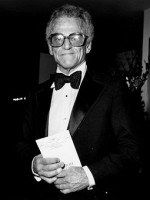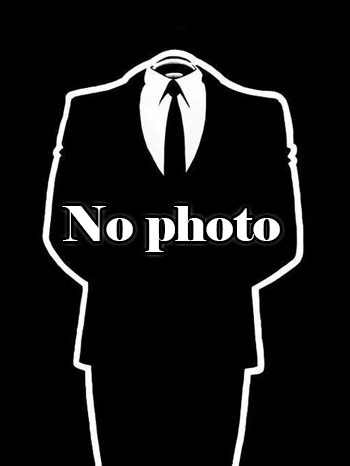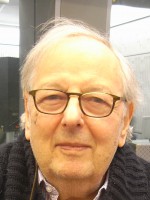Cecil Beaton is a Actor, Production Design and Costume Design British born on 14 january 1904 at London (United-kingdom)
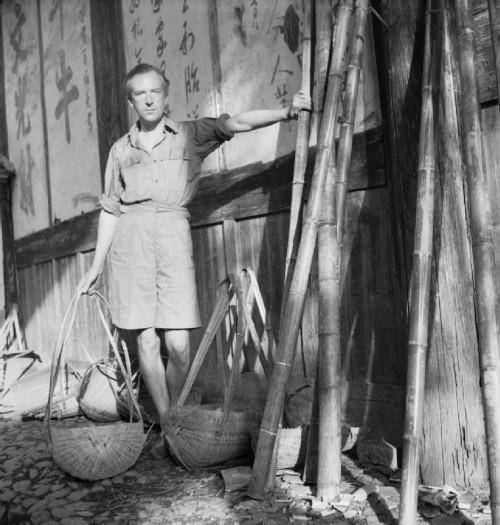
Sir Cecil Walter Hardy Beaton, CBE (14 January 1904 – 18 January 1980) was an English fashion, portrait and war photographer, diarist, painter, interior designer and an Academy Award-winning stage and costume designer for films and the theatre. He was named to the International Best Dressed List Hall of Fame in 1970.
Cecil Beaton was educated at Heath Mount School (where he was bullied by Evelyn Waugh) and St Cyprian's School, Eastbourne, where his artistic talent was quickly recognised. Both Cyril Connolly and Henry Longhurst report in their autobiographies being overwhelmed by the beauty of Beaton's singing at the St Cyprian's school concerts. When Beaton was growing up his Nanny had a Kodak 3A Camera, a popular model which was renowned for being an ideal piece of equipment to learn on. Beaton's nanny began teaching him the basics of photography and developing film. He would often get his sisters and mother to sit for him. When he was sufficiently proficient, he would send the photos off to London society magazines, often writing under a pen name and ‘recommending’ the work of Beaton.
Beaton attended Harrow, and then, despite having little or no interest in academia, moved on to St John's College, Cambridge, and studied history, art and architecture. Beaton continued his photography, and through his university contacts managed to get a portrait depicting the Duchess of Malfi published in Vogue. It was actually George "Dadie" Rylands – "a slightly out-of-focus snapshot of him as Webster's Duchess of Malfi standing in the sub-aqueous light outside the men's lavatory of the ADC Theatre at Cambridge."
Beaton left Cambridge without a degree in 1925. After proving hopeless as an office employee in his father's timber business, he spent 'many lugubrious months' learning to be an office worker with a cement merchant in Holborn. This resulted only in 'an orgy of photography at weekends' so he decided to strike out on his own. Under the patrongage of Osbert Sitwell he put on his first exhibition in the Cooling Gallery, London. It caused quite a stir.
Believing that he would meet with greater success on the other side of the Atlantic, he left for New York and slowly built up a reputation there. By the time he left, he had 'a contract with Condé Nast Publications to take photographs exclusively for them for several thousand pounds a year for several years to come.'
For fifteen years between 1930 and 1945, Beaton leased Ashcombe House in Wiltshire, where he entertained many notable figures.
In 1948 he bought Reddish House, set in 2.5 acres of gardens, approximately 5 miles to the east in Broad Chalke. Here he transformed the interior, adding rooms on the eastern side, extending the parlour southwards, and introducing many new fittings. Greta Garbo was a visitor. The upper floor had been equipped for illegal cock-fighting at the beginning of the 20th century but Beaton used the cages as wardrobes to store the costumes from his set design of My Fair Lady. He remained at the house until his death in 1980 and is buried in the churchyard. In 1947, he also bought a townhouse at number 8 Pelham Place in London.
Career
Photography
Beaton designed book jackets and costumes for charity matinees, learning the professional craft of photography at the studio of Paul Tanqueray, until Vogue took him on regularly in 1927. He also set up his own studio, and one of his earliest clients and, later, best friends was Stephen Tennant; Beaton's photographs of Tennant and his circle are considered some of the best representations of the Bright Young People of the twenties and thirties.
Beaton's first camera was a Kodak 3A folding camera. Over the course of his career, he employed both large format cameras, and smaller Rolleiflex cameras. Beaton was never known as a highly skilled technical photographer, and instead focused on staging a compelling model or scene and looking for the perfect shutter-release moment.
He was a photographer for the British edition of Vogue in 1931 when George Hoyningen-Huene, photographer for the French Vogue travelled to England with his new friend Horst. Horst himself would begin to work for French Vogue in November of that year. The exchange and cross pollination of ideas between this collegial circle of artists across the Channel and the Atlantic gave rise to the look of style and sophistication for which the 1930s are known.
Beaton is best known for his fashion photographs and society portraits. He worked as a staff photographer for Vanity Fair and Vogue in addition to photographing celebrities in Hollywood. However in 1938, he inserted 'some tiny-but-still-legible anti-Semitic phrases (including the word 'kike') into American Vogue at the side of an illustration about New York society. The issue was recalled and reprinted at vast expense, and Beaton was fired.'
Humiliated, Beaton returned to England where the Queen recommended him to the Ministry of Information. He became one of Britain's leading war photographers, best known for his images of the damage done by the German blitz. His style sharpened and his range broadened, Beaton's career was restored by the war.
Beaton often photographed the Royal Family for official publication. Queen Elizabeth, the Queen Mother was his favourite Royal sitter, and he once pocketed her scented hankie as a keepsake from a highly successful shoot. Beaton took the famous wedding pictures of the Duke and Duchess of Windsor (wearing an haute couture ensemble by the noted American fashion designer Mainbocher).
During the Second World War, Beaton was initially posted to the Ministry of Information and given the task of recording images from the home front. During this assignment he captured one of the most enduring images of British suffering during the war, that of three-year-old Blitz victim Eileen Dunne recovering in hospital, clutching her beloved teddy bear. When the image was published, America had not yet officially joined the war—but splashed across the press in the US, images such as Beaton’s helped push the American public to put pressure on their Government to help Britain in its hour of need.
Beaton had a major influence on and relationship with two other leading lights in British photography, that of Angus McBean and David Bailey. McBean was arguably the best portrait photographer of his era—in the second part of McBean's career (post-war) his work is clearly heavily influenced by Beaton, though arguably McBean was technically far more proficient in his execution. Bailey was also enormously influenced by Beaton when they met while working for British Vogue in the early 1960s, Bailey's stark use of square format (6x6) images bears clear connections to Beaton's own working patterns.
Stage and film design
After the war, Beaton tackled the Broadway stage, designing sets, costumes, and lighting for a 1946 revival of Lady Windermere's Fan, in which he also acted.
His most lauded achievement for the stage was the costumes for Lerner and Loewe's My Fair Lady (1956), which led to two Lerner and Loewe film musicals, Gigi (1958) and My Fair Lady (1964), both of which earned Beaton the Academy Award for Costume Design. He also designed the period costumes for the 1970 film On a Clear Day You Can See Forever.
Additional Broadway credits include The Grass Harp (1952), The Chalk Garden (1955), Saratoga (1959), Tenderloin (1960), and Coco (1969). He is the winner of four Tony Awards.
He also designed the sets and costumes for a production of Puccini’s last opera Turandot, first used at the Metropolitan Opera in New York and then at Covent Garden.
He also designed the academic dress of the University of East Anglia.
Diaries
Cecil Beaton was also a published and well-known diarist. In his lifetime six volumes of diaries were published, spanning the years 1922–1974. Recently a number of unexpurgated diaries have been published. These differ immensely in places to Beaton's original publications. Fearing libel suits in his own lifetime, it would have been foolhardy for Beaton to have included some of his more frank and incisive observations.
Source : Wikidata
Cecil Beaton

- Infos
- Photos
- Best films
- Family
- Characters
- Awards
Birth name Cecil Walter Hardy Beaton
Nationality United-kingdom
Birth 14 january 1904 at London (United-kingdom)
Death 18 january 1980 (at 76 years) at Wiltshire (United-kingdom)
Nationality United-kingdom
Birth 14 january 1904 at London (United-kingdom)
Death 18 january 1980 (at 76 years) at Wiltshire (United-kingdom)
Biography
Beaton was born on 14 January 1904 in Hampstead the son of Ernest Walter Hardy Beaton (1867–1936), a prosperous timber merchant, and his wife Etty Sissons (1872–1962). His grandfather, Walter Hardy Beaton (1841–1904), had founded the family business of Beaton Brothers Timber Merchants and Agents, and his father followed into the business. Ernest Beaton was also an amateur actor and had met his wife, Cecil's mother Esther or Etty, when playing the lead in a play. She was the daughter of a Cumbrian blacksmith named Joseph Sissons and had come to London to visit her married sister. Through his maternal grandmother, Elizabeth Oldcorn, Cecil was related to the Blessed Father Edward Oldcorne who was involved in the Gunpowder Plot. Ernest and Etty Beaton had four children – in addition to Cecil there were two daughters Nancy (1909–99, who married Sir Hugh Smiley) and Barbara (1912–73, known as Baba, she married Alec Hambro), and another son Reginald (1905–33).Cecil Beaton was educated at Heath Mount School (where he was bullied by Evelyn Waugh) and St Cyprian's School, Eastbourne, where his artistic talent was quickly recognised. Both Cyril Connolly and Henry Longhurst report in their autobiographies being overwhelmed by the beauty of Beaton's singing at the St Cyprian's school concerts. When Beaton was growing up his Nanny had a Kodak 3A Camera, a popular model which was renowned for being an ideal piece of equipment to learn on. Beaton's nanny began teaching him the basics of photography and developing film. He would often get his sisters and mother to sit for him. When he was sufficiently proficient, he would send the photos off to London society magazines, often writing under a pen name and ‘recommending’ the work of Beaton.
Beaton attended Harrow, and then, despite having little or no interest in academia, moved on to St John's College, Cambridge, and studied history, art and architecture. Beaton continued his photography, and through his university contacts managed to get a portrait depicting the Duchess of Malfi published in Vogue. It was actually George "Dadie" Rylands – "a slightly out-of-focus snapshot of him as Webster's Duchess of Malfi standing in the sub-aqueous light outside the men's lavatory of the ADC Theatre at Cambridge."
Beaton left Cambridge without a degree in 1925. After proving hopeless as an office employee in his father's timber business, he spent 'many lugubrious months' learning to be an office worker with a cement merchant in Holborn. This resulted only in 'an orgy of photography at weekends' so he decided to strike out on his own. Under the patrongage of Osbert Sitwell he put on his first exhibition in the Cooling Gallery, London. It caused quite a stir.
Believing that he would meet with greater success on the other side of the Atlantic, he left for New York and slowly built up a reputation there. By the time he left, he had 'a contract with Condé Nast Publications to take photographs exclusively for them for several thousand pounds a year for several years to come.'
For fifteen years between 1930 and 1945, Beaton leased Ashcombe House in Wiltshire, where he entertained many notable figures.
In 1948 he bought Reddish House, set in 2.5 acres of gardens, approximately 5 miles to the east in Broad Chalke. Here he transformed the interior, adding rooms on the eastern side, extending the parlour southwards, and introducing many new fittings. Greta Garbo was a visitor. The upper floor had been equipped for illegal cock-fighting at the beginning of the 20th century but Beaton used the cages as wardrobes to store the costumes from his set design of My Fair Lady. He remained at the house until his death in 1980 and is buried in the churchyard. In 1947, he also bought a townhouse at number 8 Pelham Place in London.
Career
Photography
Beaton designed book jackets and costumes for charity matinees, learning the professional craft of photography at the studio of Paul Tanqueray, until Vogue took him on regularly in 1927. He also set up his own studio, and one of his earliest clients and, later, best friends was Stephen Tennant; Beaton's photographs of Tennant and his circle are considered some of the best representations of the Bright Young People of the twenties and thirties.
Beaton's first camera was a Kodak 3A folding camera. Over the course of his career, he employed both large format cameras, and smaller Rolleiflex cameras. Beaton was never known as a highly skilled technical photographer, and instead focused on staging a compelling model or scene and looking for the perfect shutter-release moment.
He was a photographer for the British edition of Vogue in 1931 when George Hoyningen-Huene, photographer for the French Vogue travelled to England with his new friend Horst. Horst himself would begin to work for French Vogue in November of that year. The exchange and cross pollination of ideas between this collegial circle of artists across the Channel and the Atlantic gave rise to the look of style and sophistication for which the 1930s are known.
Beaton is best known for his fashion photographs and society portraits. He worked as a staff photographer for Vanity Fair and Vogue in addition to photographing celebrities in Hollywood. However in 1938, he inserted 'some tiny-but-still-legible anti-Semitic phrases (including the word 'kike') into American Vogue at the side of an illustration about New York society. The issue was recalled and reprinted at vast expense, and Beaton was fired.'
Humiliated, Beaton returned to England where the Queen recommended him to the Ministry of Information. He became one of Britain's leading war photographers, best known for his images of the damage done by the German blitz. His style sharpened and his range broadened, Beaton's career was restored by the war.
Beaton often photographed the Royal Family for official publication. Queen Elizabeth, the Queen Mother was his favourite Royal sitter, and he once pocketed her scented hankie as a keepsake from a highly successful shoot. Beaton took the famous wedding pictures of the Duke and Duchess of Windsor (wearing an haute couture ensemble by the noted American fashion designer Mainbocher).
During the Second World War, Beaton was initially posted to the Ministry of Information and given the task of recording images from the home front. During this assignment he captured one of the most enduring images of British suffering during the war, that of three-year-old Blitz victim Eileen Dunne recovering in hospital, clutching her beloved teddy bear. When the image was published, America had not yet officially joined the war—but splashed across the press in the US, images such as Beaton’s helped push the American public to put pressure on their Government to help Britain in its hour of need.
Beaton had a major influence on and relationship with two other leading lights in British photography, that of Angus McBean and David Bailey. McBean was arguably the best portrait photographer of his era—in the second part of McBean's career (post-war) his work is clearly heavily influenced by Beaton, though arguably McBean was technically far more proficient in his execution. Bailey was also enormously influenced by Beaton when they met while working for British Vogue in the early 1960s, Bailey's stark use of square format (6x6) images bears clear connections to Beaton's own working patterns.
Stage and film design
After the war, Beaton tackled the Broadway stage, designing sets, costumes, and lighting for a 1946 revival of Lady Windermere's Fan, in which he also acted.
His most lauded achievement for the stage was the costumes for Lerner and Loewe's My Fair Lady (1956), which led to two Lerner and Loewe film musicals, Gigi (1958) and My Fair Lady (1964), both of which earned Beaton the Academy Award for Costume Design. He also designed the period costumes for the 1970 film On a Clear Day You Can See Forever.
Additional Broadway credits include The Grass Harp (1952), The Chalk Garden (1955), Saratoga (1959), Tenderloin (1960), and Coco (1969). He is the winner of four Tony Awards.
He also designed the sets and costumes for a production of Puccini’s last opera Turandot, first used at the Metropolitan Opera in New York and then at Covent Garden.
He also designed the academic dress of the University of East Anglia.
Diaries
Cecil Beaton was also a published and well-known diarist. In his lifetime six volumes of diaries were published, spanning the years 1922–1974. Recently a number of unexpurgated diaries have been published. These differ immensely in places to Beaton's original publications. Fearing libel suits in his own lifetime, it would have been foolhardy for Beaton to have included some of his more frank and incisive observations.
Best films
Usually with
Filmography of Cecil Beaton (11 films)
Actor
 , 1h26
, 1h26Origin USA
Genres Documentary
Themes Films about writers, Films about journalists
Actors Lauren Bacall, Marisa Berenson, Cecil Beaton, Dick Cavett, Truman Capote, Mike Douglas
Roles Self (archive footage)
Rating74%





The film features recorded audio and filmed interviews of Vreeland, as well as interviews with colleagues, family, and friends of Vreeland. Beginning with an exploration of Vreeland’s childhood, the film offers a glimpse of fashionable Paris during the Belle Époque, a time when Vreeland had access to exciting and influential friends of her parents, such as ballet dancer Sergei Diaghilev. She even claimed to have ridden with Buffalo Bill Cody, though the documentary makes it clear that Vreeland would occasionally exaggerate for the sake of storytelling.
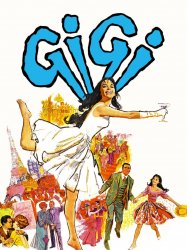
Gigi (1958)
, 1h59Directed by Vincente Minnelli, Noël Howard
Origin USA
Genres Comedy, Romantic comedy, Musical, Romance
Themes Films about music and musicians, Musical films
Actors Leslie Caron, Louis Jourdan, Maurice Chevalier, Hermione Gingold, Isabel Jeans, Jacques Bergerac
Roles Gentleman in Park (uncredited)
Rating65%





Set in turn-of-the-20th century Paris, the film opens with Honoré Lachaille (Maurice Chevalier) among high society in the Bois de Boulogne. A charming old roué, he cynically remarks that "Like everywhere else, most people in Paris get married, but not all. There are some who will not marry, and some who do not marry. But in Paris, those who will not marry are usually men, and those who do not marry are usually women." So marriage is not the only option for wealthy young bon vivants like his nephew Gaston (Louis Jourdan), who is bored with life. The one thing Gaston truly enjoys is spending time with Madame Alvarez (Hermione Gingold), whom he calls Mamita, and especially her granddaughter, the precocious, carefree Gilberte, aka Gigi who is 15 (Leslie Caron). Following the family tradition, Madame Alvarez sends Gigi to her sister, Great Aunt Alicia (Isabel Jeans), to be groomed as a courtesan and learn etiquette and charm. To Alicia, love is an art, and a necessary accomplishment for Gigi's social and economic future. But Gigi, shows disdain for such trivial love that a man and his mistress usually has. Remaining true to her girlish, yet charming personality, she finds herself having the most fun when with Gaston (35) whom she regards as an older brother.
Art

My Fair Lady (1964)
, 2h46Directed by George Cukor, David S. Hall
Origin USA
Genres Drama, Comedy, Musical theatre, Musical, Romance
Themes Films about music and musicians, Films based on mythology, Théâtre, Musical films, Films based on Greco-Roman mythology, Films based on plays, Films based on musicals, Children's films, Films based on Greco-Roman mythology
Actors Audrey Hepburn, Rex Harrison, Stanley Holloway, Marni Nixon, Wilfrid Hyde-White, Gladys Cooper
Roles Production Design
Rating76%





In Edwardian London, Professor Henry Higgins (Rex Harrison), a scholar of phonetics, believes that the accent and tone of one's voice determines a person's prospects in society. In Covent Garden one evening he boasts to a new acquaintance, Colonel Hugh Pickering (Wilfrid Hyde-White), himself an expert in phonetics, that he could teach any person to speak in a way that he could pass them off as a duke or duchess at an embassy ball. Higgins selects as an example a young flower seller, Eliza Doolittle (Audrey Hepburn), who has a strong Cockney accent. Eliza's ambition is to work in a flower shop, but her thick accent makes her unsuitable. Having come from India to meet Higgins, Pickering is invited to stay with the professor. The following morning, Eliza shows up at Higgins' home, seeking lessons. Pickering is intrigued and offers to cover all expenses if the experiment should be successful.

Gigi (1958)
, 1h59Directed by Vincente Minnelli, Noël Howard
Origin USA
Genres Comedy, Romantic comedy, Musical, Romance
Themes Films about music and musicians, Musical films
Actors Leslie Caron, Louis Jourdan, Maurice Chevalier, Hermione Gingold, Isabel Jeans, Jacques Bergerac
Roles Production Design
Rating65%





Set in turn-of-the-20th century Paris, the film opens with Honoré Lachaille (Maurice Chevalier) among high society in the Bois de Boulogne. A charming old roué, he cynically remarks that "Like everywhere else, most people in Paris get married, but not all. There are some who will not marry, and some who do not marry. But in Paris, those who will not marry are usually men, and those who do not marry are usually women." So marriage is not the only option for wealthy young bon vivants like his nephew Gaston (Louis Jourdan), who is bored with life. The one thing Gaston truly enjoys is spending time with Madame Alvarez (Hermione Gingold), whom he calls Mamita, and especially her granddaughter, the precocious, carefree Gilberte, aka Gigi who is 15 (Leslie Caron). Following the family tradition, Madame Alvarez sends Gigi to her sister, Great Aunt Alicia (Isabel Jeans), to be groomed as a courtesan and learn etiquette and charm. To Alicia, love is an art, and a necessary accomplishment for Gigi's social and economic future. But Gigi, shows disdain for such trivial love that a man and his mistress usually has. Remaining true to her girlish, yet charming personality, she finds herself having the most fun when with Gaston (35) whom she regards as an older brother.
Costume and makup

My Fair Lady (1964)
, 2h46Directed by George Cukor, David S. Hall
Origin USA
Genres Drama, Comedy, Musical theatre, Musical, Romance
Themes Films about music and musicians, Films based on mythology, Théâtre, Musical films, Films based on Greco-Roman mythology, Films based on plays, Films based on musicals, Children's films, Films based on Greco-Roman mythology
Actors Audrey Hepburn, Rex Harrison, Stanley Holloway, Marni Nixon, Wilfrid Hyde-White, Gladys Cooper
Roles Costume Design
Rating76%





In Edwardian London, Professor Henry Higgins (Rex Harrison), a scholar of phonetics, believes that the accent and tone of one's voice determines a person's prospects in society. In Covent Garden one evening he boasts to a new acquaintance, Colonel Hugh Pickering (Wilfrid Hyde-White), himself an expert in phonetics, that he could teach any person to speak in a way that he could pass them off as a duke or duchess at an embassy ball. Higgins selects as an example a young flower seller, Eliza Doolittle (Audrey Hepburn), who has a strong Cockney accent. Eliza's ambition is to work in a flower shop, but her thick accent makes her unsuitable. Having come from India to meet Higgins, Pickering is invited to stay with the professor. The following morning, Eliza shows up at Higgins' home, seeking lessons. Pickering is intrigued and offers to cover all expenses if the experiment should be successful.
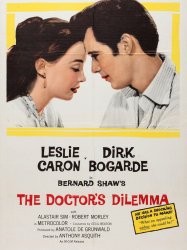
The Doctor's Dilemma (1959)
, 1h39Directed by Anthony Asquith
Origin United-kingdom
Genres Drama, Comedy, Comedy-drama
Themes Théâtre, Films based on plays
Actors Leslie Caron, Dirk Bogarde, Alastair Sim, Robert Morley, Alec McCowen, Terence Alexander
Roles Costume Design
Rating58%





À la fin de l'époque victorienne à Londres, l'artiste-peintre Louis Dubedat est atteint de la tuberculose. Sa femme Jennifer, follement amoureuse d'un mari qu'elle idéalise, ne peut se résoudre à le voir disparaître. Elle va demander à l'éminent spécialiste Sir Colenso Ridgeon de tenter le tout pour le tout afin de le sauver. Le docteur a tellement de patients qu'il ne peut traiter en priorité que certains cas extrêmes et Jennifer le convainc (en même temps qu'il est séduit par son charme) en lui présentant des œuvres de son mari en qui le docteur reconnaît un grand artiste. Mais en prenant Louis en charge, le docteur et son équipe découvrent que l'artiste est doublé d'un escroc qui est, de surcroît, bigame, marié à une autre femme qu'il a abandonnée. Le docteur est confronté à un dilemme, entravé, en plus, par les sentiments qu'il éprouve pour Jennifer : soit laisser l'artiste s'éteindre en préservant les illusions de Jennifer, soit tenter de le sauver en dévoilant à celle-ci la bigamie et les autres travers de son mari.

Gigi (1958)
, 1h59Directed by Vincente Minnelli, Noël Howard
Origin USA
Genres Comedy, Romantic comedy, Musical, Romance
Themes Films about music and musicians, Musical films
Actors Leslie Caron, Louis Jourdan, Maurice Chevalier, Hermione Gingold, Isabel Jeans, Jacques Bergerac
Roles Costume Design
Rating65%





Set in turn-of-the-20th century Paris, the film opens with Honoré Lachaille (Maurice Chevalier) among high society in the Bois de Boulogne. A charming old roué, he cynically remarks that "Like everywhere else, most people in Paris get married, but not all. There are some who will not marry, and some who do not marry. But in Paris, those who will not marry are usually men, and those who do not marry are usually women." So marriage is not the only option for wealthy young bon vivants like his nephew Gaston (Louis Jourdan), who is bored with life. The one thing Gaston truly enjoys is spending time with Madame Alvarez (Hermione Gingold), whom he calls Mamita, and especially her granddaughter, the precocious, carefree Gilberte, aka Gigi who is 15 (Leslie Caron). Following the family tradition, Madame Alvarez sends Gigi to her sister, Great Aunt Alicia (Isabel Jeans), to be groomed as a courtesan and learn etiquette and charm. To Alicia, love is an art, and a necessary accomplishment for Gigi's social and economic future. But Gigi, shows disdain for such trivial love that a man and his mistress usually has. Remaining true to her girlish, yet charming personality, she finds herself having the most fun when with Gaston (35) whom she regards as an older brother.
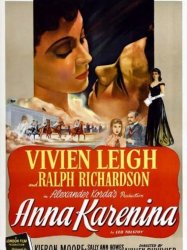
Anna Karenina (1948)
, 2h19Directed by Guy Hamilton, Julien Duvivier, Russell Lloyd
Origin United-kingdom
Genres Drama, Romance
Themes Films about sexuality, Films about suicide
Actors Vivien Leigh, Ralph Richardson, Kieron Moore, Sally Ann Howes, Martita Hunt, Mary Kerridge
Roles Costume Design
Rating65%





Anna Karenina (Vivien Leigh) is married to Alexei Karenin (Ralph Richardson), a cold government official in St Petersburg who is apparently more interested in his career than in satisfying the emotional needs of his wife. Called to Moscow by her brother Stepan Oblonsky (Hugh Dempster), a reprobate who has been unfaithful to his trusting wife Dolly (Mary Kerridge) once too often, Anna meets Countess Vronsky (Helen Haye) on the night train. They discuss their sons, with the Countess showing Anna a picture of her son Count Vronsky (Kieron Moore), a cavalry officer.
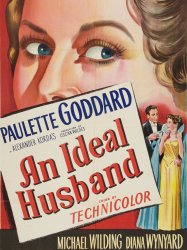
An Ideal Husband (1947)
, 2h5Directed by Alexander Korda
Origin United-kingdom
Genres Drama, Comedy
Themes Théâtre, Films based on plays
Actors Paulette Goddard, Michael Wilding, Diana Wynyard, Hugh Williams, C. Aubrey Smith, Glynis Johns
Roles Costume Design
Rating64%





A mysterious lady attempts to blackmail a respected politician into giving a speech in parliament that supports her interests.
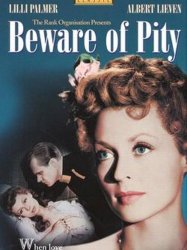
Beware of Pity (1946)
, 1h45Directed by Maurice Elvey
Origin United-kingdom
Genres Drama, Romance
Themes Films about disabilities
Actors Lilli Palmer, Albert Lieven, Cedric Hardwicke, Gladys Cooper, Freda Jackson, Linden Travers
Roles Costume Design
Rating62%





The film opens with a framing device set in post-Second World War Britain. When a young man comes to aged Anton Marek (Albert Lieven) for romantic advice, Marek tells him a story from his own past, which leads to a flashback.

On Approval (1944)
Directed by Clive Brook
Genres Comedy, Romance
Actors Beatrice Lillie, Clive Brook, Googie Withers, Roland Culver, O. B. Clarence, Laurence Hanray
Roles Costume Design
Rating71%





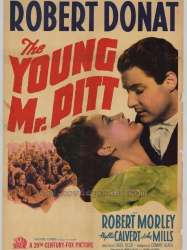
The Young Mr. Pitt (1942)
, 1h58Directed by Carol Reed
Genres Drama, Biography, Historical
Themes Political films, Napoleonic Wars films, French Revolution films
Actors Robert Donat, Robert Morley, Herbert Lom, Jean Cadell, Phyllis Calvert, Raymond Lovell
Roles Costume Design
Rating67%






The Young Mr. Pitt (1942)
, 1h58Directed by Carol Reed
Origin United-kingdom
Genres Drama, Biography, Historical
Themes Children's films, Histoire de France, Napoleonic Wars films
Actors Robert Donat, Robert Morley, Phyllis Calvert, John Mills, Jean Cadell, Raymond Lovell
Roles Costume Design
Rating67%





1783. Le Parlement est conduit par une coalition entre Charles James Fox et Lord Frederick North. Le roi George III, qui ne les aime guère, est satisfait lorsqu'ils commencent à perdre de leur influence et décide de nommer Premier ministre William Pitt le Jeune. Pitt, dont le père, le comte de Chatham, était un important homme d'état, a seulement 24 ans et il a du mal à être pris au sérieux par les autres hommes politiques. Néanmoins, Pitt est déterminé à lutter contre la corruption et à redonner à l'Angleterre une place importante. Il décide de dissoudre le Parlement et, après qu'il a gagné largement les élections, il s'installe au 10 Downing Street et travaille à plusieurs réformes, y compris le renforcement de la Royal Navy.
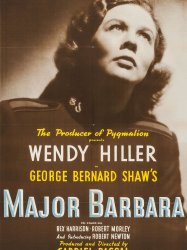
Major Barbara (1941)
, 2h11Directed by David Lean, Harold French, Gabriel Pascal
Origin United-kingdom
Genres Comedy
Themes Films based on plays
Actors Wendy Hiller, Rex Harrison, Robert Morley, Robert Newton, Sybil Thorndike, Emlyn Williams
Roles Costume Design
Rating67%





In this social satire, Barbara Undershaft (Hiller), an idealistic major in the Salvation Army, is deeply troubled by the fact that her father, Andrew Undershaft (Robert Morley), is a wealthy weapons manufacturer. Meanwhile, Andrew is looking for an heir for his industrial empire, in particular a foundling like himself.
 Connection
Connection
